Asia’s largest auto show, cross-country drives, a new speed record, nearly a 100 launches and lots of surprises made the year gone by our busiest and most exciting ever. Here's a recap
Champion of champions
Our annual celebration of all-round excellence saw the Renault Kwid win the 2016 Autocar Car of the Year award at a glitzy function on January 29, 2016. Not surprising, the Kwid has gone to become a roaring success and a case study for global automakers on how to get it right at the budget-end of the Indian car market. Only 23 cars were eligible for the award but they were as disparate as the BMW i8 and the homegrown DC Avanti. In the two-wheeler category, the Bajaj Pulsar RS 200 took home the ‘Bike of the Year’ crown.
Against all odds
We have to admit it was a noble cause and worth the punt to see if restricting the number of cars choking Delhi roads would reduce air pollution. With this in mind, on January 1, 2016, the Delhi government rolled out the much-debated ‘odd-even’ scheme for 15 days in a bid to reduce the thick smog that clings to the capital in the winter months. Under this plan, cars bearing registration numbers that ended with an odd digit were allowed to ply on odd dates, while those ending with an even digit were allowed to commute on even dates. The radical scheme was again implemented on April 15, for a fortnight. While the state government declared the exercise a success, experts were unconvinced about the improvement in air quality. The scheme, however, did result in a significant dip in traffic on the roads.
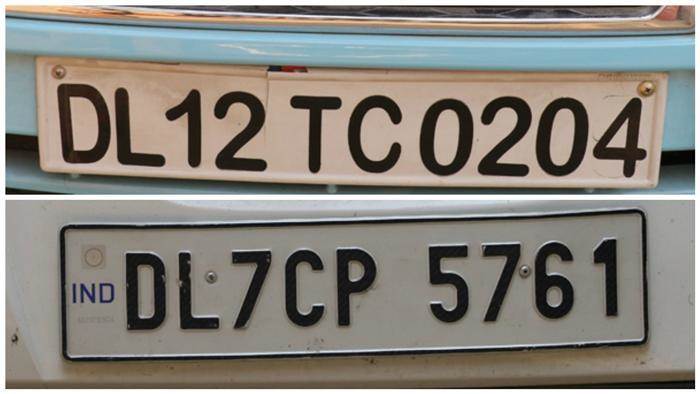
Demonising diesel
Also towards the same cause of reducing air pollution, the Supreme Court banned the registration of diesel vehicles with engine capacities over 2,000cc in Delhi-NCR. This sent automakers into a tizzy. Tata Motors, Toyota Kirloskar Motors and Mercedes-Benz India were among the ones seriously affected with many of their models falling under the ban and Delhi-NCR accounting for a significant chunk of their volumes. The ban was imposed in mid-December 2015 and was extended multiple times before being finally lifted on August 12, 2016, against the levy of 1 percent green cess on the ex-showroom price of the vehicles. The ban’s effectiveness remains under question as diesel emission and that too of select vehicles is only a sliver compared to the numerous actual pollution emitters. This sudden, illogical and irrational ban has scared diesel-only carmakers into launching petrol variants as insurance.

Show-stoppers
The 2016 edition of the Auto Expo was bigger than ever. It not only had the largest number of exhibitors but also a record number of vehicles. Among the array of machines on display, it was interesting to see a growing focus on hybrids, a trend that has caught on aggressively during the year. However, reflecting the market sentiment, compact sedans and SUVs dominated the show. And while there were more production cars than concepts, the number of actual launches was surprisingly low. Notable ones included the Jaguar XE, the BMW X1 and the 7-series sedan. Local brands like Tata Motors and Mahindra put their best foot forward while companies like Skoda and Bajaj questioned the impact of the show on sales and chose to stay away.
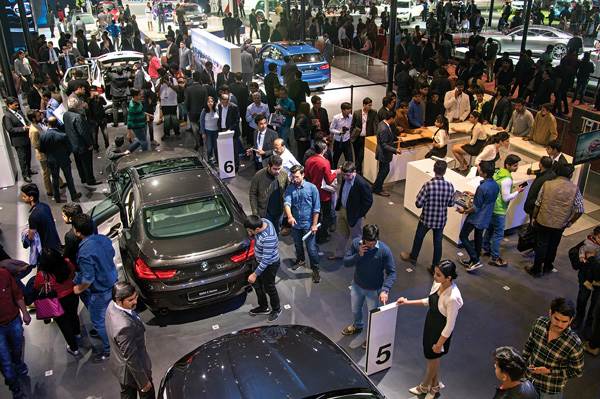
Taxing times
The government announced an additional cess on cars and SUVs in the Budget 2016-17, even as most carmakers were grappling with a slowdown in demand. An additional infrastructure cess of one percent was levied on petrol, LPG, CNG cars having a length under four metres and engine capacity not exceeding 1,200cc, 2.5 percent cess on diesel cars under four metres and with engine capacity less than 1,500cc, and 4 percent on other higher engine capacity cars, SUVs and larger sedans. Moreover, 1 percent tax was levied on luxury cars priced above Rs 10 lakh. Needless to say, carmakers wasted no time in passing most of the tax burden to the customers with a majority of them announcing a hike in prices almost immediately. The announcement of GST, however, which aims to simplify the complex tax structure, has been welcomed by the automakers.
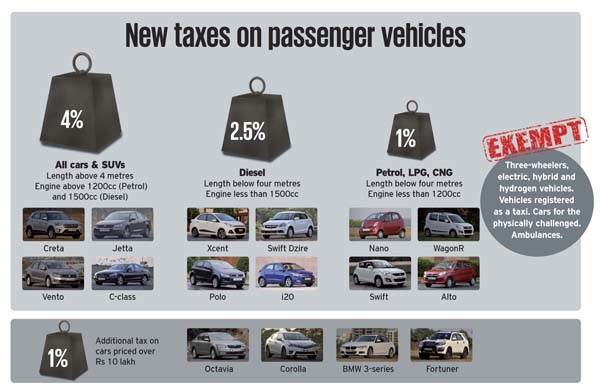
Delhi to Mumbai on one tank
Driving from Delhi to Mumbai on one tank of fuel might sound impossible, but at Autocar we love challenges. We set out in a Renault Lodgy from the Renault dealership in NCR, and reached Mumbai with a quarter tank to spare! As it turned out, it would have been possible to go even further, perhaps even to Goa! The record run spanning 1,388km was achieved with a staggering fuel efficiency of 42kpl. Only 32.91 litre of diesel was consumed, thanks to our senior test driver Rahul Kakar who drove like there was a landmine under his right foot to get the most out of the frugal 85hp 1.5-litre K9K Renault engine. Most of the driving was done at night to avoid traffic and, yes, with the AC off.

Crash, Boom, Bang
In a round of crash testing by Global NCAP, which involved the Kwid, the Maruti Eeco and the Celerio, Mahindra Scorpio and the Hyundai Eon, all received zero stars. The cars were tested for crash safety at a speed of 64kph when the ‘unstable’ body shells of these cars collapsed, exposing the test dummies to life-threatening injuries. However, four months later, following Renault’s latest set of improvements, the Kwid was assessed again in the frontal impact test and it achieved an improved score of one star for adult occupant protection. Manufacturers have begun taking safety seriously.
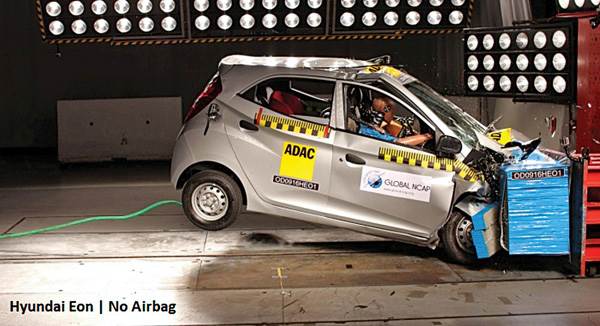
Brexit wrecks it
Britain leaves the European Union (EU) and the world gets a new word ‘Brexit’. Never fully embracing the EU partnership, Britain voted to leave it and the ramifications were felt in the auto industry too. Many UK auto manufacturers felt leaving the EU would weaken their position for international trade negotiations and isolate them from winning contracts abroad. Jaguar Land Rover’s earnings fell as much as 37 percent in the April-June quarter due to Brexit’s depreciation of the pound – this was despite higher sales in the same period. Countries including India will have to realign Free Trade Agreements with the EU bloc and Britain, and the effects of Brexit will only be seen next year when the negotiations and the actual exit begin. An immediate Brexit impact, however, was the devaluation of the pound which turned out to be a windfall for anyone buying a Rolls – the Ghost is now Rs 50 lakh cheaper!

Cambodia calling
Having driven the length and breadth of India, crossing borders into different countries is what excites us. We packed into a Renault Duster and set out from Delhi for Cambodia, along the historic Asian Highway. We passed through green paddy fields and dense teak forests in Myanmar, skimmed on silky smooth highways in Thailand, paid homage to ancient temples in Laos and finally arrived at the iconic Angkor Wat temples in Cambodia. It was a tough but trouble-free drive covering more than 7,000km, five countries and three time zones. The journey only whetted our appetite for more and we were already planning our next road trip.

Setting the record straight
This year, with an Audi R8 V10 Plus, we hit 332.2kph and drove straight into the record books. This was the highest ever recorded speed on Indian soil and it was certified by the Federation of Motor Sports Clubs of India and Ernst & Young. Interestingly, the previous record was 324.2kph by Jaime Alguersuari’s Scuderia Toro Rosso F1 car at the 2011 Indian GP. Breaking this record in a completely factory trim road car gave us a real sense of achievement. Hyderabad’s Outer Ring Road was especially closed for the event and the Audi gobbled up 5.1km of tarmac in 68sec, hitting 332.2kph at the hands of racer Aditya Patel. Autocar editor Hormazd Sorabjee and test driver Rahul Kakar also did runs and joined the exclusive 200mph (320kph) club.

Cracking the whip
The government approved the Motor Vehicle (Amendment) Bill 2016, now levies far steeper penalties in case of traffic violations, to crack the whip on errant motorists. The bill outlines hefty fines for traffic violations – for driving without a licence, the existing penalty of Rs 500 has been increased tenfold to
Rs 5,000. For drunk driving, motorists have to pay Rs 10,000, up from Rs 2,000. For over-speeding, the penalty is up from Rs 400 to a range of Rs 1,000-Rs 2,000. The fine for driving without a valid insurance has been doubled to Rs 2,000. The government aims to reduce accidents and fatalities by 50 percent in
the next five years by levying higher penalties. Each year, over five lakh road accidents are reported in India and over 1,50,000 individuals lose their lives.
Motor Vehicle Amendment Bill 2016
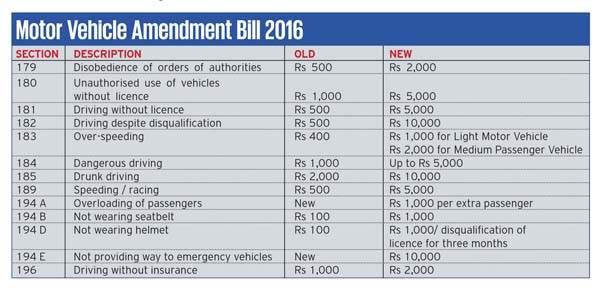
When fast is really fast
Autocar India’s annual Track Day at the Madras Motorsports Race Track is always a festival of speed and records. This year was extra special as we broke both our production car and production bike records. The track was resurfaced this year, and although we used a reference car from last year, comparing the times was a bit tricky as the surface did throw up some inconsistent times. Nonetheless, a wildcard entry (private import, not sold in India), Porsche 911 GT3, driven as always by ex-F1 racer Narain Kartikeyan, ran the course in 1m50.39 seconds giving us our fastest lap ever. On the bikes, the 2015 Malaysian superbike champion Rajini Krishnan blitzed our previous record by setting a 1m50.35s lap time on an Aprilia RSV4RF.
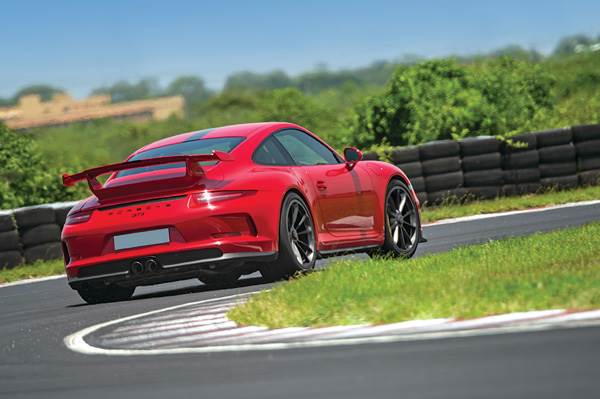
Boardroom battle
The Tata Sons board’s sudden move to oust Tata Group chairman Cyrus Mistry and replace him with Ratan Tata as interim chairman triggered one of the biggest boardroom battles in corporate India. The public mud-slinging from both sides and a bitter fight for control of the Tata operating companies has seen their stocks plummet disastrously. The effects of the Tata-Mistry war is likely to be felt at Tata Motors which was showing positive signs of a turnaround under Mistry’s leadership. Mistry was personally involved in developing cars like the Hexa and had green-lighted an exciting line-up of future products that promised to rejuvenate Tata Motors passenger car division. Mistry’s resignation from all listed Tata entities on December 19, 2016, further cast a pall of uncertainty on the company. Future products beyond the Nexon which need board approval are likely to get delayed.
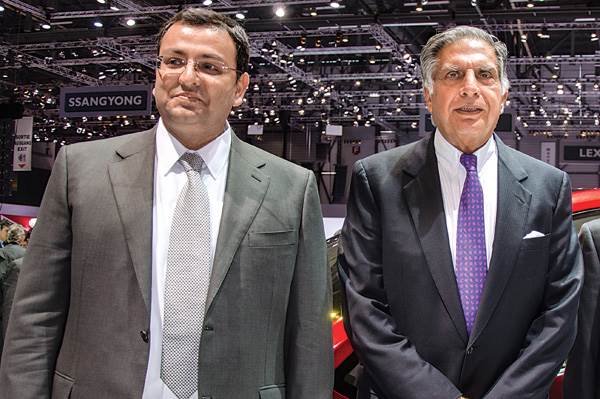
Show me the money
In a surprise move on November 8, 2016, the Union government scrapped currency notes of Rs 500 and Rs 1,000 denominations in an effort to eliminate black money and reduce counterfeits. Experts feel vehicle sales as well as motorcycle sales in the rural markets could be affected since cash drives a sizeable chunk of the market. Nearly a month after the announcement, a significant decline in footfalls and enquiries at the dealerships was observed. While overall vehicle sales in November declined, the passenger vehicle segment managed to stay afloat, registering growth of 1.8 percent with 2,40,979 units sold. However, going ahead, auto makers are seriously worried and some have realigned production plans.

#KWIDdrive2Paris
Parents are French but this little baby was conceived and made in India, just like Kalki Koechlin. The Kwid in fact is 98 percent Indian and boasts a record level of localisation from day one for any global carmaker. And what better to test all those locally made Indian parts than by putting it through the toughest test of its life – a drive from its home in India to its roots in France. Yes, we drove a Kwid for 45 days and 18,000km, from Delhi to Paris across 13 countries. And you know what? We didn’t have a single problem, not even a puncture. We can’t think of a better testimony for a car that had to brave the worst roads we’ve ever seen in Myanmar and a Russian winter that once stopped Napoleon. The fact that the Kwid came through unscathed and looked showroom fresh at the end of it made all of us doubly proud.
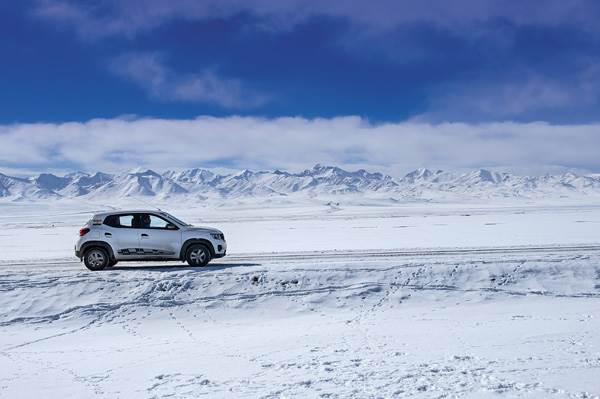

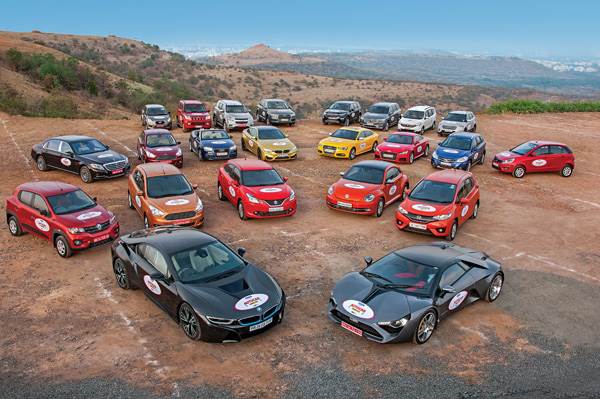

Comments
Member Login
Personal Details
No comments yet. Be the first to comment.